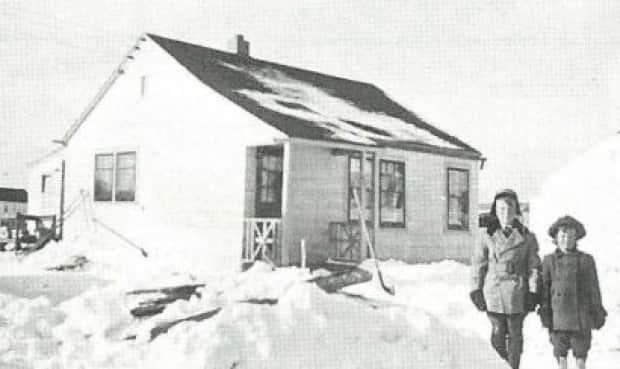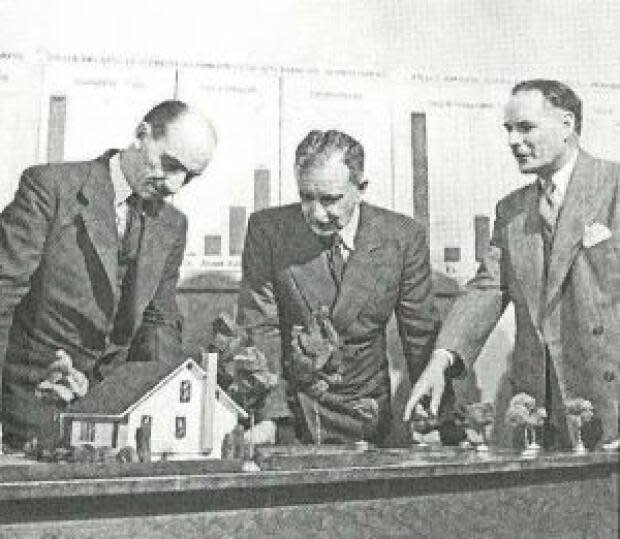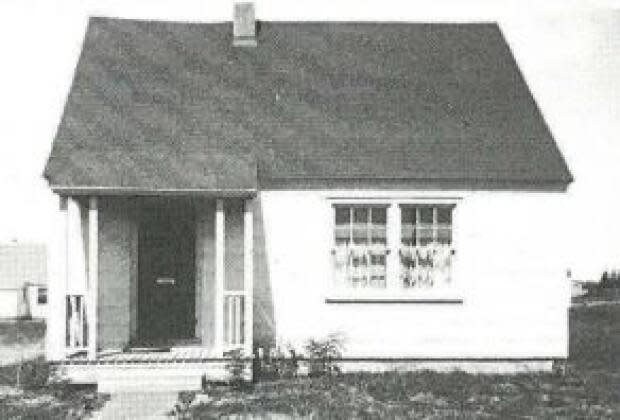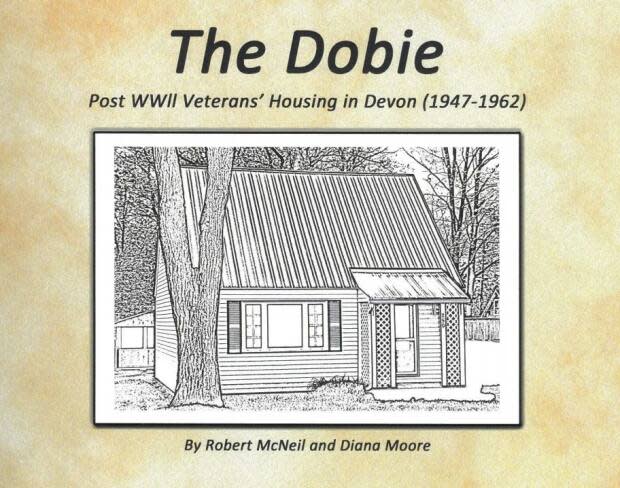The Dobies: A story of Canada's postwar housing crisis and Fredericton's tiny homes

Postwar gable-roof houses that date back to the 1940s are scattered throughout Fredericton, both on the north and south sides, and the endearing term Dobies, which locals coined to describe them, remains a colloquialism today.
How this local name for the one-and-a-half-storey houses came to be, though, has not been passed down through the generations.
The story of the Dobie house is one of returning soldiers, a city's desperate need to expand, and a country's introduction to planned housing.

Around 1942, federal, provincial and municipal governments in Canada started preparing for more than one million Second World War soldiers to come home.
They called it planning for "reconstruction," a time when veterans would return to their pre-war lives.
But there was a housing crisis at the time, says Fredericton architect John Leroux.
"There was an enormous housing crunch and the soldiers needed places to live."
It was a problem the three levels of government had to fix, and with a pressing deadline, it had to be done quickly.
A building boom
The response to this housing crunch in Fredericton was some Devon farmland purchased by the federal government, where 200 houses were built for veterans and their families.
In their book The Dobie, Rob McNeil and Diana Moore of Fredericton say the scarcity of vacant, flat, dry land within Fredericton had city councillors looking for land on the north side of the St. John River.

And once they found the farm of a man called Hector Dobie, who was originally from P.E.I. but had owned the Devon property since 1922, they knew they had hit the jackpot.
Dobie owned 70 acres, just what was needed for a housing development, and he was willing to sell.
In 1945, Fredericton council voted for amalgamation with the town of Devon, bringing the city's population up to 13,000 from 10,000. In 1946, Dobie's farm was purchased for $18,000.
Financed by Wartime Housing Ltd., a Crown corporation created to build and manage houses for rent to veterans, 200 homes were built on Dobie's land, which today would be bounded by Neill Street, MacLaren Avenue and up as far as Hughes Street and School Street.
"And so, people started calling them Dobies," said Leroux.

Most of the houses had two bedrooms, some had three, and just a few had four. But they all looked very much alike.
They had been designed by staff at Canadian Mortgage and Housing Corp., Canada's national housing agency.
According to McNeil, the houses would be rented to veterans for $24 to $30 per month and after 15 months could be purchased for about $5,000 each.
"They built a million of these homes across the country," Leroux said. "It was really the start of planned housing in Canada.
"But in Devon, 200 houses wasn't enough."
About 400 veterans were coming to Fredericton after the war, and even before construction of the houses began, more than 320 veteran applications for housing in the city were filed.
By 1947, a Royal Canadian Legion housing committee was urging the city to build homes on the south side for veterans, according to McNeil.
About 200 additional homes were built between Kings College Road and Albert Street, and Hanson and Mitchell streets.

Small homes for families
According to Leroux, the houses were built for $5,000 each and were considered middle-income housing.
"You couldn't buy the plywood today for one of these houses for $5,000."
They were smaller than 900 square feet, but they were family homes.
"They were probably half as big but four times as dense as houses today. People were raising large families."
And until the mid-1950s, when bungalow-style houses became popular, Dobie houses were the most common.

The future is Dobie
Linda Morehouse of Fredericton lived in a pink, two-bedroom Dobie when she was a child. It was on Miles Street on the city's north side.
She remembers the closets in the house were tiny, like cubbyholes in the wall. There, she would crawl in with her crayons to hide.
"There's probably still crayon marks from when I used to write on the walls."

Years later, after getting married, she lived in another Dobie on the south side, on Palmer Street.
Over the years, she's seen the houses change. Some had sunrooms and garages added. Sometimes the gable roofs were changed to straight roofs to allow for a complete second storey.
But others remain the same as they were when first built.

"I rent now, but if I were to buy a house, I would buy a Dobie house," said Morehouse.
According to Leroux, younger people now look for small, easy-to-maintain homes. And so, decades later, the sturdy Dobies are still very much sought after, some selling for more than $175,000.
"And I think the future is going to go back to these Dobie houses, much more than large, three-door garage houses."

